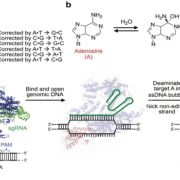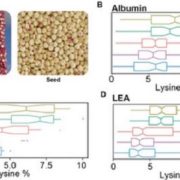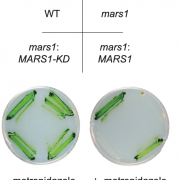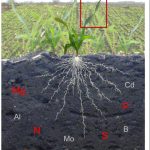Review: Salt-tolerant crops: Time to deliver
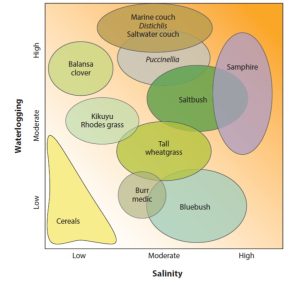 Few topics are as inherently interesting from both fundamental and applied perspectives as salt tolerance in crop plants. From the basic science side, cells have several strategies that they use to keep Na+ levels low in their cytosol in spite of what can be a very steep concentration gradient from out to in. Furthermore, at a physiological level, some tissues can cope with salt whereas others can’t, so plants use strategies to exclude out or sequester in salt. Finally, plants have a wide range of salinity tolerances, providing ample material to study. From the perspective of crop production, soil salinization is an increasing problem. Further, as the authors note, seawater incursion into agricultural regions is increasing with sea level rises and more vigorous storm systems. In this timely review, Melino and Tester survey our understanding of salt-tolerance in plants, with a particular focus on how to deliver salt-tolerant crops. They cover strategies from traditional breeding and selection, introgression of salinity tolerance from crop wild relatives or de novo domestication of these near crops, the use of genetic engineering to alter ion channels and membrane transporters, and a particularly interesting discussion of the use of grafting as a strategy to combine salt-tolerant root stocks with high-yielding shoot scions. They highlight a gap between some incentives for breeders (which include national yields) and small-scale farmers, particularly those whose lands are most affected. Although the challenges are significant, they end with the positive message that “together, we can do this!” (Summary by Mary Williams @PlantTeaching) Annu. Rev. Plant Biol. 10.1146/annurev-arplant-061422-104322
Few topics are as inherently interesting from both fundamental and applied perspectives as salt tolerance in crop plants. From the basic science side, cells have several strategies that they use to keep Na+ levels low in their cytosol in spite of what can be a very steep concentration gradient from out to in. Furthermore, at a physiological level, some tissues can cope with salt whereas others can’t, so plants use strategies to exclude out or sequester in salt. Finally, plants have a wide range of salinity tolerances, providing ample material to study. From the perspective of crop production, soil salinization is an increasing problem. Further, as the authors note, seawater incursion into agricultural regions is increasing with sea level rises and more vigorous storm systems. In this timely review, Melino and Tester survey our understanding of salt-tolerance in plants, with a particular focus on how to deliver salt-tolerant crops. They cover strategies from traditional breeding and selection, introgression of salinity tolerance from crop wild relatives or de novo domestication of these near crops, the use of genetic engineering to alter ion channels and membrane transporters, and a particularly interesting discussion of the use of grafting as a strategy to combine salt-tolerant root stocks with high-yielding shoot scions. They highlight a gap between some incentives for breeders (which include national yields) and small-scale farmers, particularly those whose lands are most affected. Although the challenges are significant, they end with the positive message that “together, we can do this!” (Summary by Mary Williams @PlantTeaching) Annu. Rev. Plant Biol. 10.1146/annurev-arplant-061422-104322


